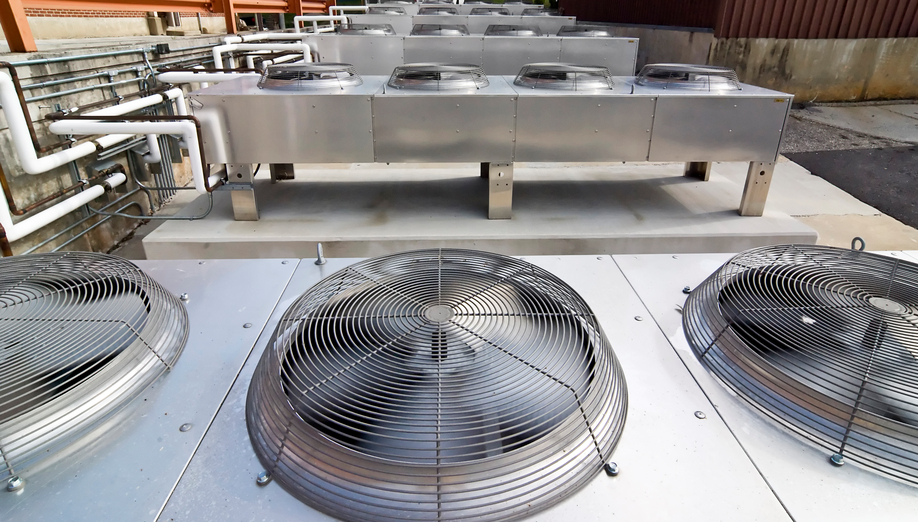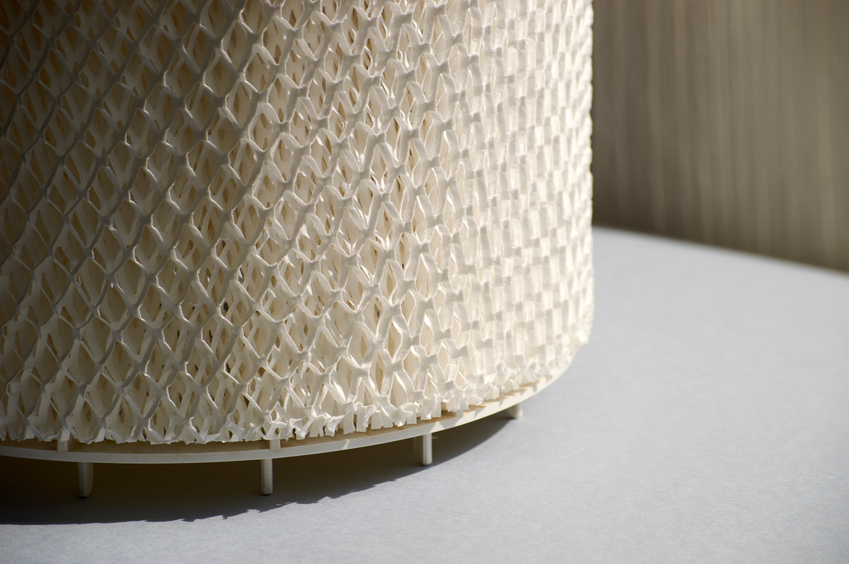HVAC Ventilation 15 PDH Discount Package
Ozone for Improving Indoor Air Quality - Myths and Realities (C04-013)
Professional Engineer's Guide to Energy Star® for Commercial Buildings (C02-027)
Ventilation and Exhaust Systems (M04-009)

This online engineering PDH course introduces some practical design considerations for ventilation systems and their components. A dedicated section is included to cover industrial ventilation, which discusses the principle techniques and regulatory information for the prevention of hazards. The recommendations presented in this course are basic the guidelines and prudent practices at minimum.
Ventilation is the process by which clean air (normally outdoor air) is intentionally provided to a space where the stale, overheated or polluted air is removed. Ventilation includes both the exchange of air to the outside as well as circulation of air within the building. It is one of the most important factors for maintaining acceptable indoor air quality and may be accomplished by either natural or mechanical means.
The design and selection of ventilation systems is a complex process which should involve professionals familiar with 'comfort' or 'hazard' control. In many cases improper design could result in the 'sick building' syndrome and, in many industrial applications, can be hazardous to the health of the worker.
This 5 PDH online course is intended for mechanical and HVAC engineers, architects, building designers, contractors, civil estimators, energy auditors, facility managers and general audience interested in gaining a better understanding of domestic and industrial ventilation systems.
This PE continuing education course is intended to provide you with the following specific knowledge and skills:
- Understanding the factors affecting the ventilation design
- Learning about general purpose ventilation for summer, winter and fall conditions
- Learning about the types of mechanical ventilation systems
- Learning about displacement ventilation
- Learning about natural ventilation; building stack and wind effect
- Understanding ventilation strategies for indoor air quality
- Understanding the basic filtration techniques
- Estimating ventilation rates based on air quality, air change and heat removal method
- Understanding the concepts of industrial ventilation and regulatory information
- Learning about dilution ventilation and local exhaust ventilation
- Understanding the principles of hood design, fan selection and associated components
- Learning about basic design considerations for ventilation systems
In this professional engineering CEU course, you need to review the document titled "HVAC - Domestic and Industrial Ventilation Systems".
Upon successful completion of the quiz, print your Certificate of Completion instantly. (Note: if you are paying by check or money order, you will be able to print it after we receive your payment.) For your convenience, we will also email it to you. Please note that you can log in to your account at any time to access and print your Certificate of Completion.

This online engineering PDH course provides guidance on ozone's true capabilities, potential benefits and limitations in improving indoor air quality. This course attempts to address the common vendor claims and myths associated with use of ozone in indoor spaces.
With public concern about indoor air quality rising, many people are unknowingly making it worse by using air purifiers or other devices that intentionally inject ozone into the indoor spaces. Manufacturers and vendors of ozone generators often claim that these devices eliminate bacteria, mold, and chemical contaminants from the air, and that they help persons with asthma and allergies. This is not true or backed up by any scientific research.
Independent studies by the Environmental Protection Agency (EPA) and others have shown that these devices do not effectively destroy microbes, remove odors, or reduce indoor pollutants enough to provide any health benefits. In fact relatively low amount of ozone can be harmful to health and worsen chronic respiratory diseases.
This 4 PDH online course is applicable to general public, HVAC engineers, facility engineers, architects, environmentalists, operations and maintenance personnel, as well as consultants and contractors who construct, build and manage facilities.
This PE continuing education course is intended to provide you with the following specific knowledge and skills:
- Ozone is most effective in controlling indoor air pollution
- Ozone doesn't leave any harmful by-product or residue
- Ozone destroys the sense of smell
- Ozone can be used effectively in both occupied and unoccupied spaces
- Ozone concentration in space never exceeds design values
- Controlling ozone generators output is safe and simple
- Ozone generators are approved and notified by Federal Agencies
- Ozone is equally good for air and water pollution control
- Ozone is most suitable for healthcare disinfection
- Ozone works better than air filters
- Ozone can reduce the fresh air intake in HVAC system and therefore energy
- Low level ozone is good and beneficial
In this professional engineering CEU course, you need to review the course document titled, "Ozone for Improving Indoor Air Quality - Myths and Realities".
Upon successful completion of the quiz, print your Certificate of Completion instantly. (Note: if you are paying by check or money order, you will be able to print it after we receive your payment.) For your convenience, we will also email it to you. Please note that you can log in to your account at any time to access and print your Certificate of Completion.

This online engineering PDH course is fully based on the US Environmental Protection Agency guide, “2009 Professional Engineer's Guide to the ENERGY STAR® Label for Buildings” and is divided into 6 modules, each covering a single topic and contains a purpose, background, expectations, hints and tips, and questions and answers. Where needed, industry standards are referenced and tables are provided to illustrate the relevant standard requirements.
ENERGY STAR® labeling of the building is an effort by US Environmental Protection Agency to help mitigate the society’s impact on the environment and climate change. The process requires Professional Engineers to validate each statement of Energy Performance that is used to apply for the Energy Star label. As a program of the US government, the program is free. However, it does require a professional engineer to review the application and perform a detailed field assessment and verification.
This 2 PDH online course is intended for professional engineers who plan, design, install, and operate building services systems. This course is intended to assist the PE community in understanding the requirements of the Statement of Energy Performance, the Data Checklist, and the expectations and limitations of the PE’s role in the ENERGY STAR labeling process.
This PE continuing education course is intended to provide you with the following specific knowledge and skills:
- Understanding the qualifications required for Energy Star Labeling
- Understanding the requirements of validating the Energy Performance Statement
- Understanding the categories of building types eligible for Energy Star Labeling
- Understanding the data required to validate the physical characteristics of the building
- Understanding the data required to validate the operating characteristics of the building
- Understanding the verification requirements of all forms of energy used for building operation
- Understanding the verification requirements of the thermal conditions of the building
- Understanding the verification requirements of the illumination requirements of the interior and exterior spaces
- Understanding the verification requirements of the minimum ventilation rates and acceptable indoor air quality of indoor spaces
- Understanding the format of various forms and checklists
In this professional engineering CEU course, you need to review the course document titled “2009 Professional Engineer's Guide to the ENERGY STAR® Label for Buildings”.
Upon successful completion of the quiz, print your Certificate of Completion instantly. (Note: if you are paying by check or money order, you will be able to print it after we receive your payment.) For your convenience, we will also email it to you. Please note that you can log in to your account at any time to access and print your Certificate of Completion.

This online engineering PDH course provides the basics of the ventilation system and will familiarize the reader with the mechanism of infiltration, exhaust ventilation and forced ventilation systems.
The ventilation systems supply and remove air to/from the building. In doing so, these systems control quality of breathing air and protect personnel and sensitive equipment from potentially hazardous airborne contaminants, fires, explosions, and excessive heat.
All components of ventilation systems such as fans, motors, ducts, dampers, air intakes and outlets, filters, and access panels, must work properly in order for the systems to operate safely and efficiently. Therefore, ventilation system design must be considered as an essential part of planning and development of new facility. Failure to provide effective ventilation systems in the design stage can create costly obstacles to safe and efficient operation, which ultimately presents a threat to personnel safety and health.
This 4 PDH online course is applicable to mechanical engineers, design and construction personnel, technical staff and facility personnel who are interested in gaining a better understanding of ventilation and exhaust systems.
This PE continuing education course is intended to provide you with the following specific knowledge and skills:
- What is natural ventilation and what factors determine the building porosity
- How do you calculate the infiltration using air change method, crack method, curtain wall method and stack effect method
- What are the design considerations for forced ventilation systems
- How are constant air volume ventilation systems different from variable air volume systems
- What are the appropriate applications of airfoil, backward-curved, radial blade and forward-curved fans
- What are the design principles and methods for air distribution ducts
- What are the different types of air cleaners and air filters used for ventilation purposes
- What are the common types of exhaust hoods and what factors determine the effective removal of contaminants
- How do the automatic control systems function and how is economy cycle operation achieved
- What are the basic methods and procedures for testing, adjusting and balancing (TAB) of ventilation systems
In this professional engineering CEU course, you need to review Appendix D, "Ventilation and Exhaust Systems" of the US Corps of Engineers Construction Engineering Research Laboratory (USACERL) technical report 99/20, May 1999.
Upon successful completion of the quiz, print your Certificate of Completion instantly. (Note: if you are paying by check or money order, you will be able to print it after we receive your payment.) For your convenience, we will also email it to you. Please note that you can log in to your account at any time to access and print your Certificate of Completion.